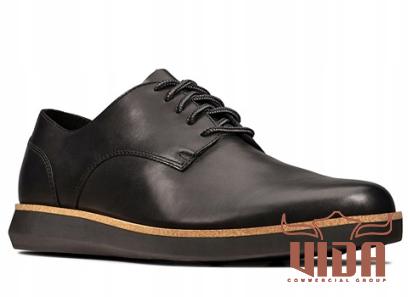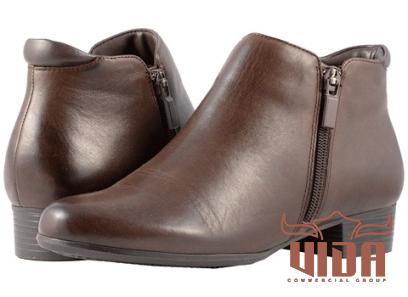The global footwear market has witnessed a seismic shift in recent years, with online sales emerging as the primary driver of growth. With the convenience offered by e-commerce platforms and the ever-increasing consumer preference for online shopping, the online shoe sales industry has experienced exponential growth. This article aims to provide a comprehensive overview of the online shoe sales market, exploring its advantages, challenges, trends, and future potential. 1. The Rise of Online Shoe Sales: The advent of e-commerce platforms and the proliferation of digital marketplaces have led to a surge in online shoe sales. Consumers can now browse and purchase shoes from the comfort of their homes, eliminating the need for physical store visits. This convenience, along with the wider product selection, competitive prices, and hassle-free return policies, has attracted a growing number of consumers to the online shoe market. 2. Advantages of Online Shoe Sales: a) Wider Product Selection: Online shoe retailers can offer an extensive range of footwear, including popular brands, styles, and sizes, due to the elimination of space constraints faced by physical stores.
leather
 b) Competitive Prices: Online retailers often offer discounted prices, as they can leverage lower operational costs compared to brick-and-mortar stores. c) Convenience and Accessibility: The 24/7 availability of online platforms allows consumers to shop at their convenience, irrespective of geographical location. d) Detailed Product Information: Online shoe stores provide comprehensive product descriptions, images, and customer reviews, aiding consumers in making informed purchasing decisions. 3. Challenges Faced by Online Shoe Retailers: a) Sizing and Fit: One of the major obstacles faced by online shoe retailers is ensuring accurate sizing and fit, as customers are unable to try on the shoes before purchasing. b) Returns and Exchanges: The online shoe market experiences a higher rate of returns and exchanges due to sizing issues, leading to additional costs for retailers. c) Brand Authenticity and Counterfeits: Online platforms are susceptible to counterfeit shoe listings, posing a challenge for retailers in maintaining brand reputation and consumer trust.
b) Competitive Prices: Online retailers often offer discounted prices, as they can leverage lower operational costs compared to brick-and-mortar stores. c) Convenience and Accessibility: The 24/7 availability of online platforms allows consumers to shop at their convenience, irrespective of geographical location. d) Detailed Product Information: Online shoe stores provide comprehensive product descriptions, images, and customer reviews, aiding consumers in making informed purchasing decisions. 3. Challenges Faced by Online Shoe Retailers: a) Sizing and Fit: One of the major obstacles faced by online shoe retailers is ensuring accurate sizing and fit, as customers are unable to try on the shoes before purchasing. b) Returns and Exchanges: The online shoe market experiences a higher rate of returns and exchanges due to sizing issues, leading to additional costs for retailers. c) Brand Authenticity and Counterfeits: Online platforms are susceptible to counterfeit shoe listings, posing a challenge for retailers in maintaining brand reputation and consumer trust.
Specifications of leather
 d) Customer Service and Support: Providing efficient customer service, especially for technical and sizing inquiries, can be challenging in the online space. 4. Emerging Trends in Online Shoe Sales: a) Mobile Shopping: With the increasing penetration of smartphones, the majority of online shoe sales are expected to occur through mobile devices, leading to a mobile-first approach by online retailers. b) Augmented Reality (AR): Implementing AR technology allows customers to virtually try on shoes and assess the fit, reducing uncertainties associated with online shoe purchases. c) Social Commerce: Brands are utilizing social media platforms and influencers to promote shoes and drive sales through their online stores. d) Sustainable and Ethical Shoes: Consumers are increasingly demanding sustainably and ethically produced footwear, prompting online retailers to include eco-friendly shoe options in their product range. 5. Key Players and Strategies in the Online Shoe Sales Market: a) E-Commerce Giants: Retail giants like Amazon, Alibaba, and Zappos dominate the online shoe market, leveraging their extensive networks, product range, and customer loyalty to stay ahead. b) Vertical Marketplaces: Online portals specializing in shoes, such as Foot Locker, ASOS, and JD.com, offer curated selections and enhanced customer experience to cater to specific shoe requirements.
d) Customer Service and Support: Providing efficient customer service, especially for technical and sizing inquiries, can be challenging in the online space. 4. Emerging Trends in Online Shoe Sales: a) Mobile Shopping: With the increasing penetration of smartphones, the majority of online shoe sales are expected to occur through mobile devices, leading to a mobile-first approach by online retailers. b) Augmented Reality (AR): Implementing AR technology allows customers to virtually try on shoes and assess the fit, reducing uncertainties associated with online shoe purchases. c) Social Commerce: Brands are utilizing social media platforms and influencers to promote shoes and drive sales through their online stores. d) Sustainable and Ethical Shoes: Consumers are increasingly demanding sustainably and ethically produced footwear, prompting online retailers to include eco-friendly shoe options in their product range. 5. Key Players and Strategies in the Online Shoe Sales Market: a) E-Commerce Giants: Retail giants like Amazon, Alibaba, and Zappos dominate the online shoe market, leveraging their extensive networks, product range, and customer loyalty to stay ahead. b) Vertical Marketplaces: Online portals specializing in shoes, such as Foot Locker, ASOS, and JD.com, offer curated selections and enhanced customer experience to cater to specific shoe requirements.
buy leather
 c) Direct-to-Consumer Brands: Emerging shoe brands are leveraging online platforms to establish a direct connection with consumers, eliminating intermediaries and offering unique brand experiences. 6. Future Potential and Expansion Opportunities: The online shoe sales market is projected to continue its impressive growth trajectory, driven by factors such as technological advancements in virtual fitting technology, personalized recommendations, and seamless shopping experiences. Expanding into emerging markets with increased internet penetration and rising disposable incomes is another avenue for growth for online shoe retailers. Conclusion: The online shoe sales market has revolutionized the footwear industry, providing consumers with unmatched convenience, choice, and competitive pricing. While challenges such as sizing issues and counterfeit listings persist, technological advancements and shifting consumer preferences offer immense growth potential for online shoe retailers. By leveraging emerging trends, embracing innovative strategies, and enhancing customer experiences, online shoe sellers can position themselves at the forefront of this thriving industry.
c) Direct-to-Consumer Brands: Emerging shoe brands are leveraging online platforms to establish a direct connection with consumers, eliminating intermediaries and offering unique brand experiences. 6. Future Potential and Expansion Opportunities: The online shoe sales market is projected to continue its impressive growth trajectory, driven by factors such as technological advancements in virtual fitting technology, personalized recommendations, and seamless shopping experiences. Expanding into emerging markets with increased internet penetration and rising disposable incomes is another avenue for growth for online shoe retailers. Conclusion: The online shoe sales market has revolutionized the footwear industry, providing consumers with unmatched convenience, choice, and competitive pricing. While challenges such as sizing issues and counterfeit listings persist, technological advancements and shifting consumer preferences offer immense growth potential for online shoe retailers. By leveraging emerging trends, embracing innovative strategies, and enhancing customer experiences, online shoe sellers can position themselves at the forefront of this thriving industry.










Your comment submitted.